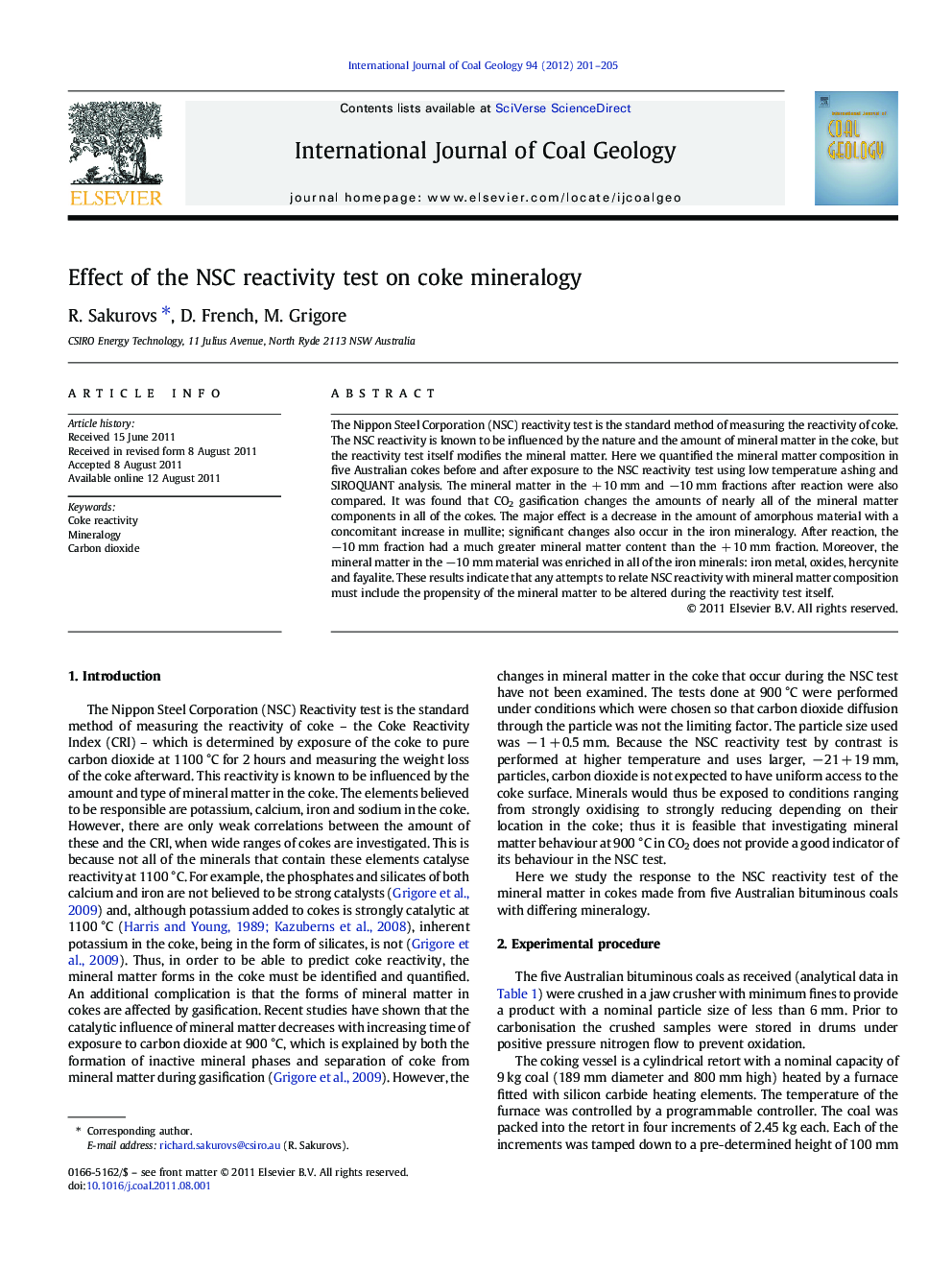| Article ID | Journal | Published Year | Pages | File Type |
|---|---|---|---|---|
| 1753655 | International Journal of Coal Geology | 2012 | 5 Pages |
The Nippon Steel Corporation (NSC) reactivity test is the standard method of measuring the reactivity of coke. The NSC reactivity is known to be influenced by the nature and the amount of mineral matter in the coke, but the reactivity test itself modifies the mineral matter. Here we quantified the mineral matter composition in five Australian cokes before and after exposure to the NSC reactivity test using low temperature ashing and SIROQUANT analysis. The mineral matter in the + 10 mm and −10 mm fractions after reaction were also compared. It was found that CO2 gasification changes the amounts of nearly all of the mineral matter components in all of the cokes. The major effect is a decrease in the amount of amorphous material with a concomitant increase in mullite; significant changes also occur in the iron mineralogy. After reaction, the −10 mm fraction had a much greater mineral matter content than the + 10 mm fraction. Moreover, the mineral matter in the −10 mm material was enriched in all of the iron minerals: iron metal, oxides, hercynite and fayalite. These results indicate that any attempts to relate NSC reactivity with mineral matter composition must include the propensity of the mineral matter to be altered during the reactivity test itself.
► Exposure of coke to carbon dioxide during the NSC test changes its mineral matter. ► The amount of amorphous material decreases and mullite increases. ► Significant changes also occur in the iron mineralogy. ► Inherent iron minerals appear to be associated with coke breakdown. ► Attempts to relate NSC reactivity with mineral matter must include their alteration during the test.
